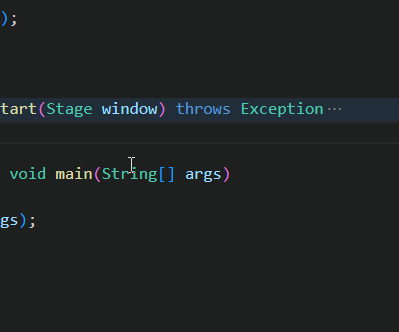如何正确在多线程环境下更新UI_使用Platform的runLater方法
如何正确在多线程环境下更新UI_使用Platform的runLater方法
许多UI控件都提供了各种修改方法,比如我们可以修改 Label 上面的文本,进度条 ProgressBar 的进度。
但我们必须保证修改UI的线程是 JavaFX 的UI线程,如果不是则会出现异常。
那么我们如何在另一个线程中修改 JavaFX 的UI呢?方法是使用 Platform.runLater 。
效果展示

示例代码
import javafx.application.Application;
import javafx.application.Platform;
import javafx.scene.Scene;
import javafx.scene.control.ProgressBar;
import javafx.scene.layout.VBox;
import javafx.stage.Stage;
public class RunLaterExample extends Application
{
private ProgressBar progressBar;
private void updateProgress(String message, int percent)
{
System.out.println(message);
Platform.runLater(() -> progressBar.setProgress(percent * 0.01) );
}
private static void sleepSecond(int second)
{
try
{
Thread.sleep(second * 1000);
}
catch (Exception e)
{
}
}
private void startInitThread()
{
new Thread(() -> {
sleepSecond(2);
this.updateProgress("Init step 1...", 30);
sleepSecond(2);
this.updateProgress("Init step 2...", 50);
sleepSecond(2);
this.updateProgress("Init step 3...", 70);
sleepSecond(2);
this.updateProgress("Init finish", 100);
}).start();
}
@Override
public void start(Stage window) throws Exception
{
startInitThread();
VBox vBox = new VBox();
progressBar = new ProgressBar(0);
vBox.getChildren().add(progressBar);
Scene scene = new Scene(vBox, 400, 300);
window.setScene(scene);
window.setTitle(this.getClass().getSimpleName());
window.show();
}
public static void main(String[] args)
{
launch(args);
}
}代码说明
这段代码创建了一个 ProgressBar ,并在另一个线程中更新它。
程序启动后,调用 startInitThread 创建了一个新的线程,模拟程序初始化过程,并通过调用 updateProgress 来更新进度条。
我们使用 Platform.runLater(() -> progressBar.setProgress(percent * 0.01) ); 来确保修改进度条的操作在 JavaFX 的UI线程中。
总结
我们必须确保在 JavaFX UI 线程中修改 UI 。如果在另一个线程要这么做,就需要通过使用 Platform.runLater 方法将修改的操作提交过去。
本文来自博客园,作者:JavaFX_HowTo,转载请注明原文链接:https://www.cnblogs.com/javafx-howto/p/17449845.html



